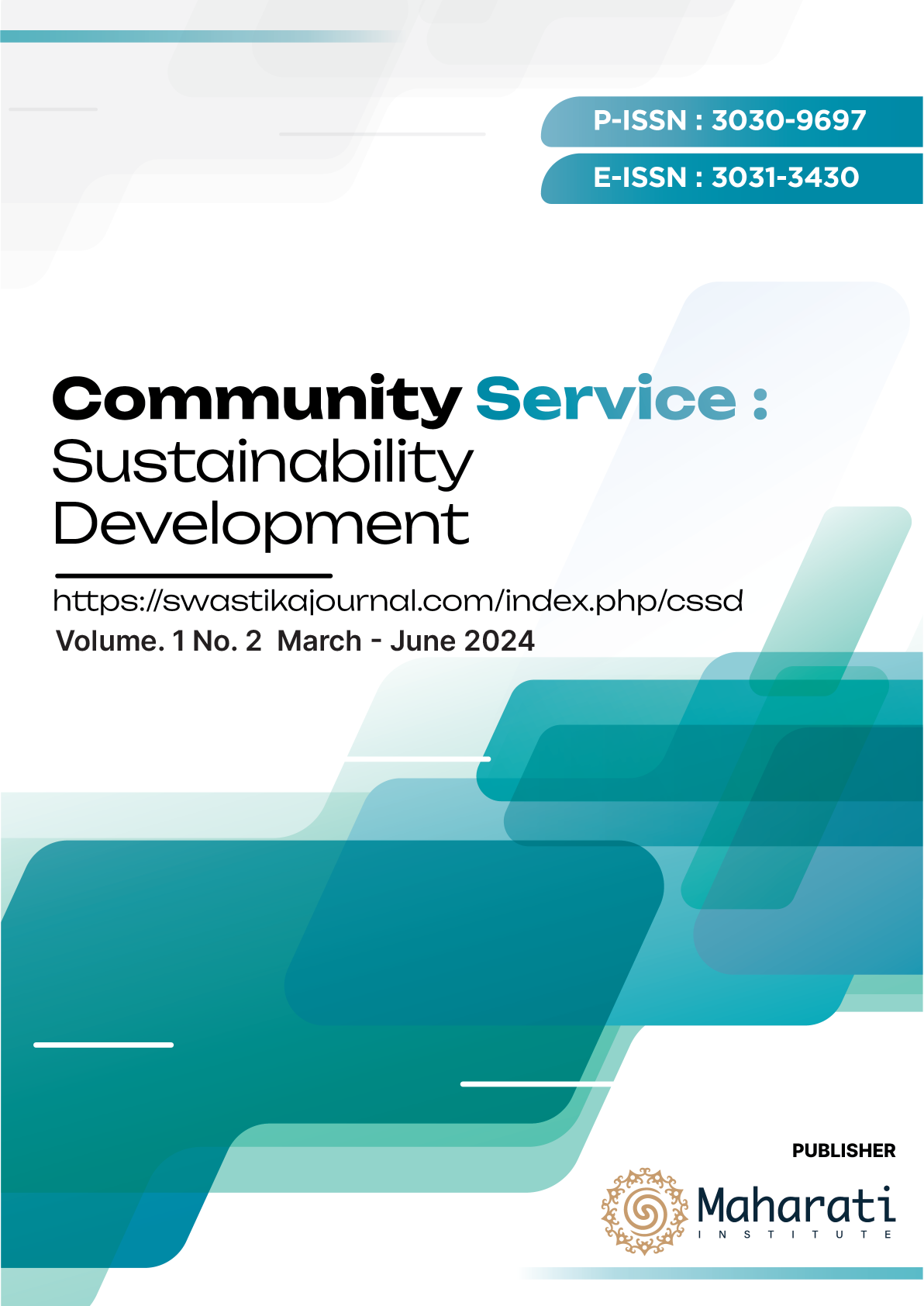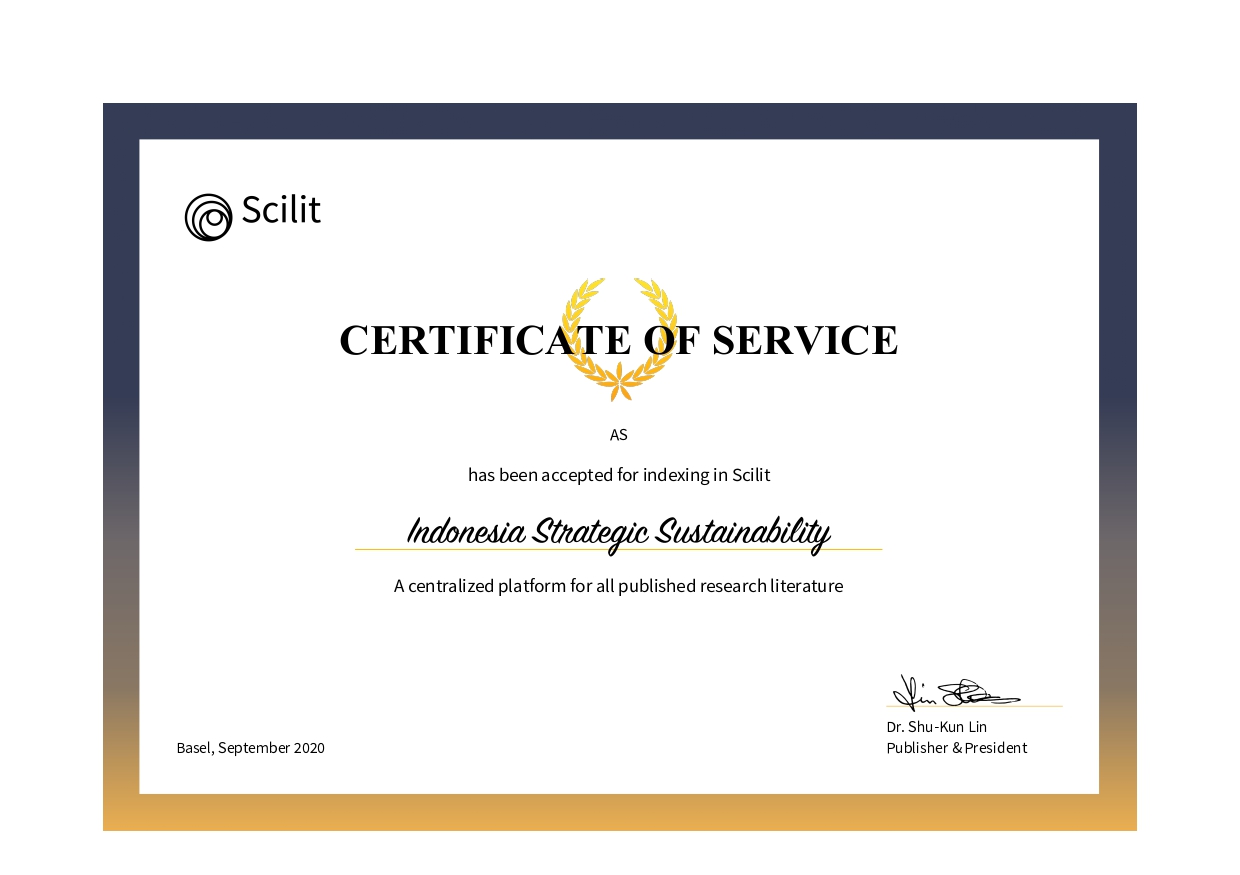Creativity and Innovation of the Community Based on Plastic Waste in Ubung Kaja Village, Bali
DOI:
https://doi.org/10.61857/cssdev.v1i2.64Keywords:
Ecobrick, Plastic waste, Non Organic, Creativity, InnovationAbstract
This community service activity aims to reduce the abundance of plastic waste, particularly plastic bottles, in the Ubung Kaja Village environment. After participating in this activity, participants will learn how to make chairs from used plastic bottles and process plastic waste, making the resulting products marketable. One of the efforts to tackle non-organic waste (such as plastic bottles and plastic bags) is to create chairs, tables, and beds with high market value. The aim and benefit of this community activity is to develop appropriate technology for managing plastic and bottle waste, thereby reducing the increasing volume of plastic waste. Ecobricks, commonly known as environmentally friendly bricks, are a method to minimize waste by filling plastic bottles with non-organic waste until they are completely solid and compact. This practice also educates children about non-organic waste, demonstrating how it can be repurposed into useful items like tables or chairs instead of waste.
References
Bagheri, A., Emami, N., & Damalas, C. A. (2021). Farmers’ behavior towards safe pesticide handling: An analysis with the theory of planned behavior. Science of the Total Environment, 751, 141709. https://doi.org/10.1016/j.scitotenv.2020.141709
Camilleri-Fenech, M., Sola, J. O. i., Farreny, R., & Durany, X. G. (2020). A snapshot of solid waste generation in the hospitality industry. The case of a five-star hotel on the island of Malta. Sustainable Production and Consumption, 21, 104–119. https://doi.org/10.1016/j.spc.2019.11.003
Christian, E., & Alhazami, L. (2023). Pengaruh Green Product Innovation Dan Green Process Innovation Terhadap Green Competitive Advantage (Studi Pada PT. Samcro Hyosung Adilestari). Jurnal Publikasi Sistem Informasi Dan Manajemen Bisnis, 2(3), 237–250. https://doi.org/10.55606/jupsim.v2i3.2029
Cucchiella, F., D’Adamo, I., & Gastaldi, M. (2014). Sustainable management of waste-to-energy facilities. Renewable and Sustainable Energy Reviews, 33, 719–728. https://doi.org/10.1016/j.rser.2014.02.015
Laksmi, P. A. S., Putra, Y. D., Sara, I. M., Setena, I. M., Putra, I. K., & Jamaludin, M. R. (2023). Self-Reliance with Nature: Development of Subak Ecotourism as an Effort to Empower the Local Community in Siangan Village, Gianyar District, Gianyar Regency. Bhakti Persada Jurnal Aplikasi IPTEKS, 9(2), 118–123.
Manurung, D. T. H., Hidayah, N., Setiany, E., Saputra, K. A. K., & Hapsari, D. W. (2022). Does Carbon Performance and Green Investment Affect Carbon Emissions Disclosure? Journal of Environmental Accounting and Management, 10(4), 335–344. https://doi.org/10.5890/JEAM.2022.12.001
Omune, B., Kambona, O., Wadongo, B., & Wekesa, A. (2021). Environmental management practices implemented by the hotel sector in Kenya. World Leisure Journal, 63(1), 98–108. https://doi.org/10.1080/16078055.2021.1888001
Purnamawati, I. A. P. S., Laksmi, P. A. S., & Suriani, N. N. (2024). Implementasi Konsep Ekonomi Sirkular Melalui Produksi Eco-Enzim dalam Pengelolaan Sampah Sisa Makanan di Desa Mambal. Akuntansi Dan Humaniora: Jurnal Pengabdian Masyarakat, 3(1), 11–18. https://doi.org/10.38142/ahjpm.v3i1.993
Rao, P. H. (2020). Green Supply Chain Management in Hotel Azure: A Case in Sustainability. Journal of Supply Chain Management Systems, 9(2 & 3), 28–38.
Rehan, R., Knight, M. A., Unger, A. J. A., & Haas, C. T. (2014). Financially sustainable management strategies for urban wastewater collection infrastructure - development of a system dynamics model. Tunnelling and Underground Space Technology, 39, 116–129. https://doi.org/10.1016/j.tust.2012.12.003
Saputra, K. A. K. (2020). The Performance Of The Internal Auditors Of The Village Rural Institution. International Journal of Environmental, Sustainability, and Social Sciences, 1(2), 28–35.
Saputra, K. A. K., & Laksmi, P. A. S. (2024). The Influence of Green Governance, Implementation of Energy Accounting, and GreenHuman Resource Management on Sustainability Performance: An Empirical Study in theHospitality Industry in Bali. Jurnal Ilmiah Akuntansi, 9(1), 113–136. https://doi.org/DOI: 10.23887/jia.v9i1.66630
Saputra, K. A. K., Manurung, D. T. H., Rachmawati, L., Siskawati, E., & Genta, F. K. (2021). Combining the concept of green accounting with the regulation of prohibition of disposable plastic use. International Journal of Energy Economics and Policy, 11(4), 84–90. https://doi.org/10.32479/ijeep.10087
Umam, K., & Astuti, F. (2022). The Embodiment of Global Governance Through Hexahelix in Preserving Terracotta Architecture. Iapa Proceedings Conference, 74. https://doi.org/10.30589/proceedings.2022.684
Veronica, S., Alexeis, G. P., Valentina, C., & Elisa, G. (2020). Do stakeholder capabilities promote sustainable business innovation in small and medium-sized enterprises? Evidence from Italy. Journal of Business Research, 119(July 2019), 131–141. https://doi.org/10.1016/j.jbusres.2019.06.025
Žalėnienė, I., & Pereira, P. (2021). Higher Education For Sustainability: A Global Perspective. Geography and Sustainability, 2(2), 99–106. https://doi.org/10.1016/j.geosus.2021.05.001
Downloads
Published
Issue
Section
License
Copyright (c) 2024 A.A Ketut JAYAWARSA, Putu Ayu Sita LAKSMI

This work is licensed under a Creative Commons Attribution-NonCommercial 4.0 International License.
Creative Commons Attribution-NonCommercial 4.0 International License.














